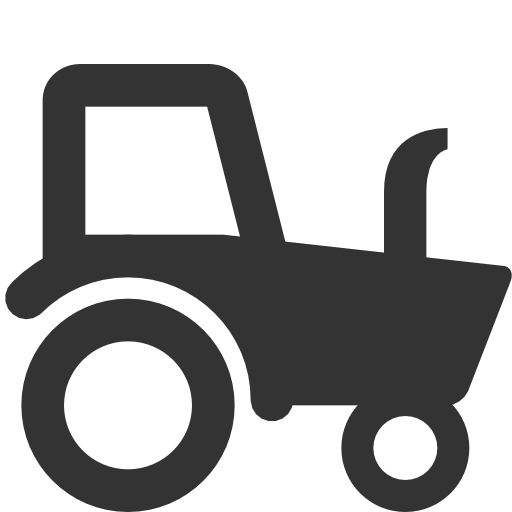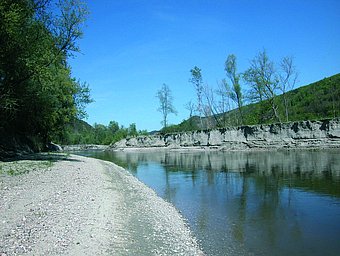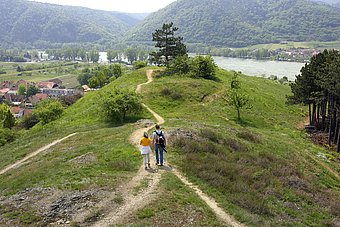LIFE project WACHAU – lively Danube, dry grasslands, natural forest
The Wachau project is the first LIFE project implemented in the region whose goal was to conserve the region’s most endangered habitats. This resulted in three focal points: Lively Danube, dry grasslands and natural forest. In the course of the LIFE project, targeted measures and projects aimed at conserving the endangered habitats and their fauna and flora were carried out:
- Structuring of the main stream of the Danube through gravel banks
- Connection of old course remains to the Danube
- Dry grassland management
- Conservation and improvement of near-natural woodland
- Construction of a conservation coordination office in the Wachau
Project promoter: Arbeitskreis Wachau Regionalentwicklung (today Welterbegemeinden Wachau association) with the participation of the province of Lower Austria, the Lower Austrian Provincial Fishing Association and the Ministry of Sustainability and Tourism (BMLFUW)
Project duration: 2003 - 2008
Project costs: €5,200,000 (50% EU)
Lively Danube
The regulation of the Danube’s course over 100 years ago created longitudinal shorings, most of them with towpaths. This separated wetland areas and side arm systems from the main stream. The riparian waters became increasingly silted up and were seldom submerged during periods of flooding. This additionally produced a lack of shoreline structures such as gravel banks and flat shorelines. These are essential for the reproduction of many species of Danube fish and as resting and breeding areas for aquatic birds.
The main Danube stream underwent structuring during the project: Gravel banks and islands were created near the banks using gravel from the shipping channel. The old courses at Grimsing, Aggsbach, Rührsdorf and Rossatzbach were reconnected to the Danube. Side arms were created that have water from the main stream flowing through them all year round. The newly created gravel structures and Danube side arms provide spawning, breeding and resting areas for the Danube fish species and breeding habitats for aquatic and marshland birds. The wetland areas also profit from being connected to the old courses through the permanent supply of water.
Dry grasslands
The dry grasslands have been used as extensive pastures since the Middle Ages. Today, they are at risk from shrub encroachment. Colourful flower meadows are being increasingly afforested, especially in the side valleys (Spitzer Graben).
In the dry grassland management of the project, these special habitats were conserved through bush clearance and/or mowing. Grazing by wild sheep prevented the open areas from becoming overgrown. The key areas for the maintenance of dry grasslands are located in the municipalities of Dürnstein, Rossatz-Arnsdorf, Spitz and Weißenkirchen. Over 50 hectares of shrub-encroached dry grassland were cleared and restored. Additional management measures took place on almost 100 hectares. In total, over 40 individual areas were worked on. Some of the work was done by professional landscape conservationists, with land owners, vintners, volunteer fire brigades and local associations also getting involved. Since the end of this LIFE project, these areas have continued to be maintained by land managers and owners and therefore remain natural jewels of the Wachau and valuable habitat for rare species of flora and fauna.
Natural forest
The upper reaches of the slopes above the Danube are mostly heavily forested and are very important as protected and recreational forests.
In five selected areas of woodland, a total of 160 hectares of natural forest cells were set up for species of animal dependent upon old and dead wood. The LIFE project puts forests out of use around the Ferdinand-Warte (4.5 hectares) at Unterbergen in collaboration with the municipality of Mautern, in Dürnstein on Höhereck (3.5 hectares) and in Spitz on Buchberg (15.5 hectares). Large near-natural areas of woodland were also taken out of forestry use in the municipality of Rossatz-Arnsdorf and with the farming community of Rossatz on Gochelberg-Toen Berg (63.8 hectares) and on Steinige Ries (72.8 hectares). All areas have been declared a conservation area or natural monument.
These natural areas now provide habitats for endangered species of bird. Old and dead wood are essential for the survival of rare beetles, such as the great capricorn beetle and the stag beetle. Forest improvements are being undertaken through measures such as the felling of non-native trees like robinia and stands of spruce. Trees not native to the riparian forest areas in Grimsing, Aggsbach Dorf and Rührsdorf-Rossatz (robinia, box elder) were also removed and even new areas of riparian forest created. In total, improvements were carried out on around 65 hectares.




